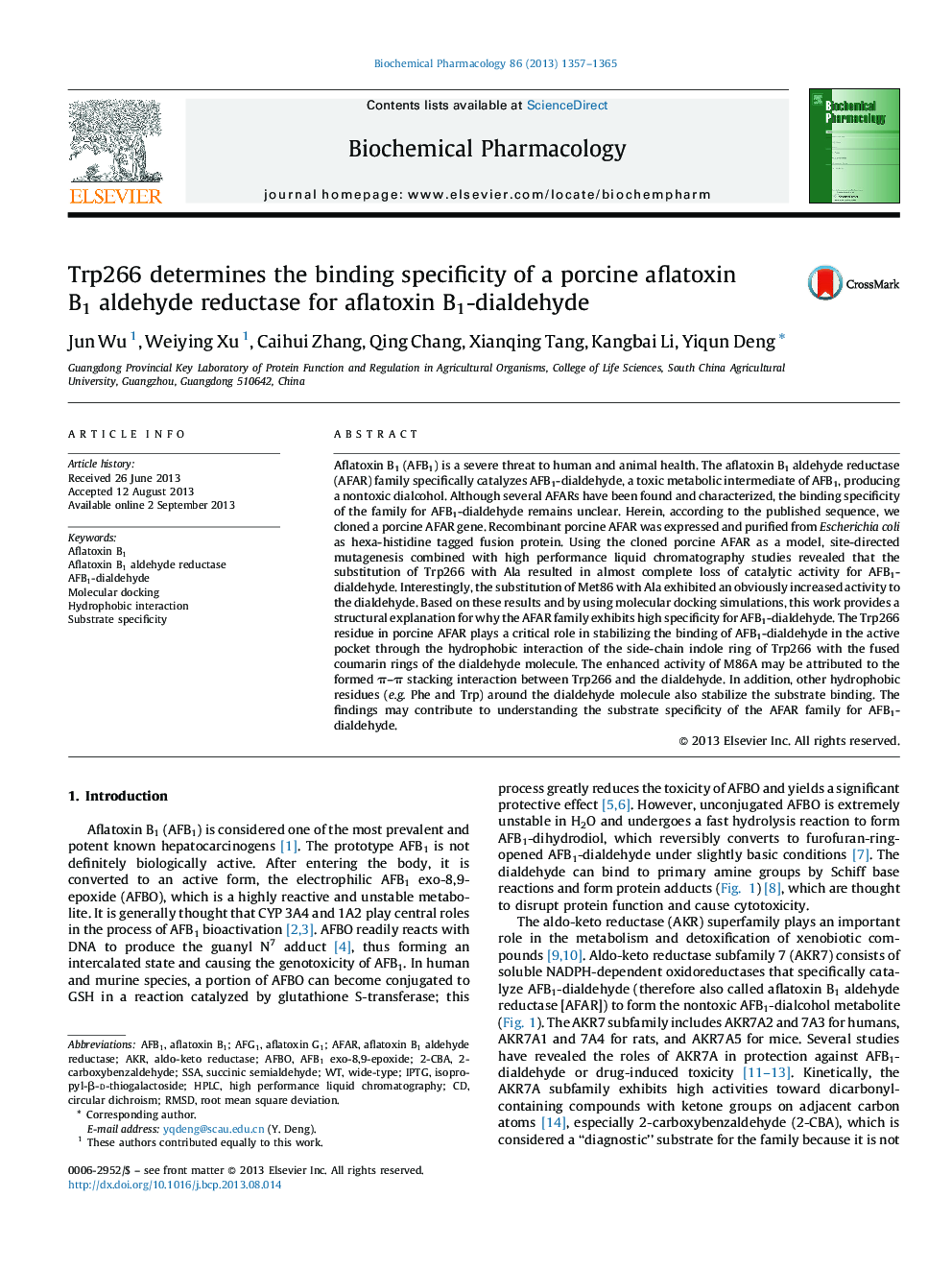| Article ID | Journal | Published Year | Pages | File Type |
|---|---|---|---|---|
| 5823681 | Biochemical Pharmacology | 2013 | 9 Pages |
Aflatoxin B1 (AFB1) is a severe threat to human and animal health. The aflatoxin B1 aldehyde reductase (AFAR) family specifically catalyzes AFB1-dialdehyde, a toxic metabolic intermediate of AFB1, producing a nontoxic dialcohol. Although several AFARs have been found and characterized, the binding specificity of the family for AFB1-dialdehyde remains unclear. Herein, according to the published sequence, we cloned a porcine AFAR gene. Recombinant porcine AFAR was expressed and purified from Escherichia coli as hexa-histidine tagged fusion protein. Using the cloned porcine AFAR as a model, site-directed mutagenesis combined with high performance liquid chromatography studies revealed that the substitution of Trp266 with Ala resulted in almost complete loss of catalytic activity for AFB1-dialdehyde. Interestingly, the substitution of Met86 with Ala exhibited an obviously increased activity to the dialdehyde. Based on these results and by using molecular docking simulations, this work provides a structural explanation for why the AFAR family exhibits high specificity for AFB1-dialdehyde. The Trp266 residue in porcine AFAR plays a critical role in stabilizing the binding of AFB1-dialdehyde in the active pocket through the hydrophobic interaction of the side-chain indole ring of Trp266 with the fused coumarin rings of the dialdehyde molecule. The enhanced activity of M86A may be attributed to the formed Ï-Ï stacking interaction between Trp266 and the dialdehyde. In addition, other hydrophobic residues (e.g. Phe and Trp) around the dialdehyde molecule also stabilize the substrate binding. The findings may contribute to understanding the substrate specificity of the AFAR family for AFB1-dialdehyde.
Graphical abstractDownload full-size image
